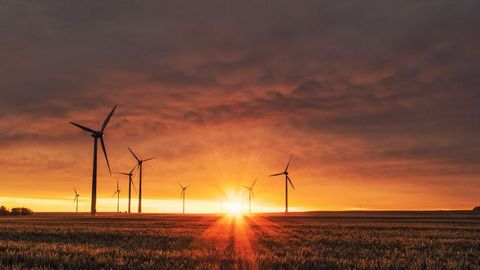Companies news
Neoen's Decade of Renewable Success in South Australia

From the Hornsdale Power Reserve to the Ambitious Goyder South Project.
In March 2017 Mike Cannon-Brookes and Elon Musk made a bet that resulted in the world's first and largest grid-scale battery installation in South Australia. This moment, triggered by Musk's claim that Tesla batteries could solve the state's energy challenges, led to the creation of the Hornsdale Power Reserve.
Fast forward six years, and South Australia, now a leader in global energy transition, with over 70 percent renewable energy, aiming for 100 percent by 2030. Neoen, based at Lot Fourteen, owns and operates the Hornsdale Power Reserve, playing a role in South Australia's renewable energy landscape.
Neoen, the leading French independent producer of renewable energy has a strong connection with South Australia. Louis de Sambucy, Neoen Australia CEO, expresses their affection, calling it a "love story" and acknowledging the region's remarkable achievement in renewable energy penetration.
Louis de Sambucy recently explained:
We are building the solutions that are necessary with storage, but not only storage to supply energy when its needed, but storage to help run the grid when you have a higher renewable energy percentage.
The company is actively involved in several projects in South Australia, notably the $6 billion Goyder South project, featuring wind, solar, and massive battery storage.
Louis de Sambucy added:
"Goyder is a world-class project and one of our best projects worldwide."
Neoen's commitment extends to the local community, with the recent transportation of 75 giant turbines for the Goyder South wind project. This project, with a delivery program spanning a year, marks a milestone in Australia's shift towards renewable energy.
In addition, Goyder Renewables Zone has transferred ownership of 1,000 hectares at the Worlds End Gorge to the Government of South Australia, paving the way for a new national park in the state’s Mid North region. The new national park will protect several threatened species of flora and fauna such as the Pygmy Blue Tongue Lizard and the Flinders Ranges Worm-lizard.
Australia passed the Climate Change Act in 2022, which doubles the target for emissions reductions by 2030 and sets the goal of reaching net zero emissions by 2050. To keep global warming to no more than 1.5°C – as called for in the Paris Agreement – emissions need to be reduced by 45 percent by 2030 and reach net zero by 2050, adopted by 196 Parties, including Australia, at the UN Climate Change Conference (COP21).
Source: Lot Fourteen & Environment - Goyder Renewables Zone press release


